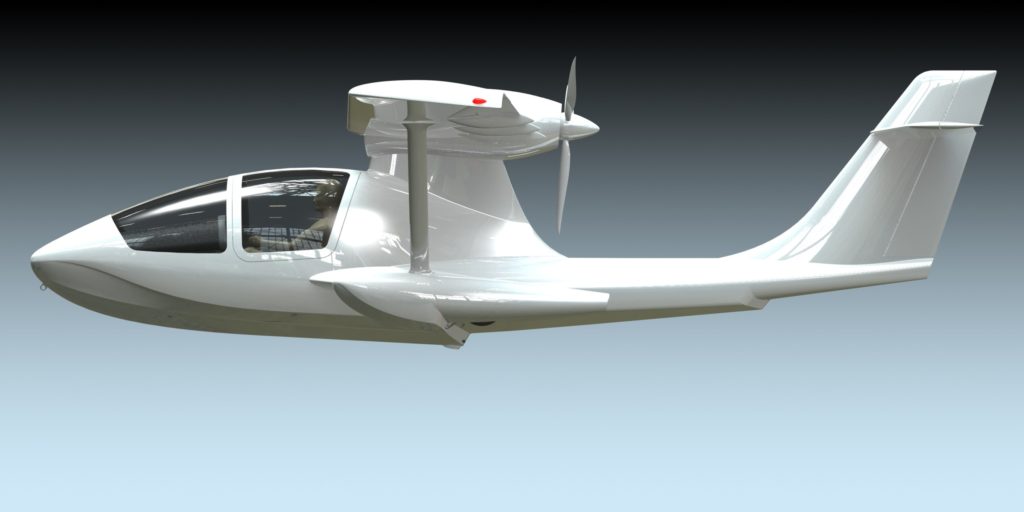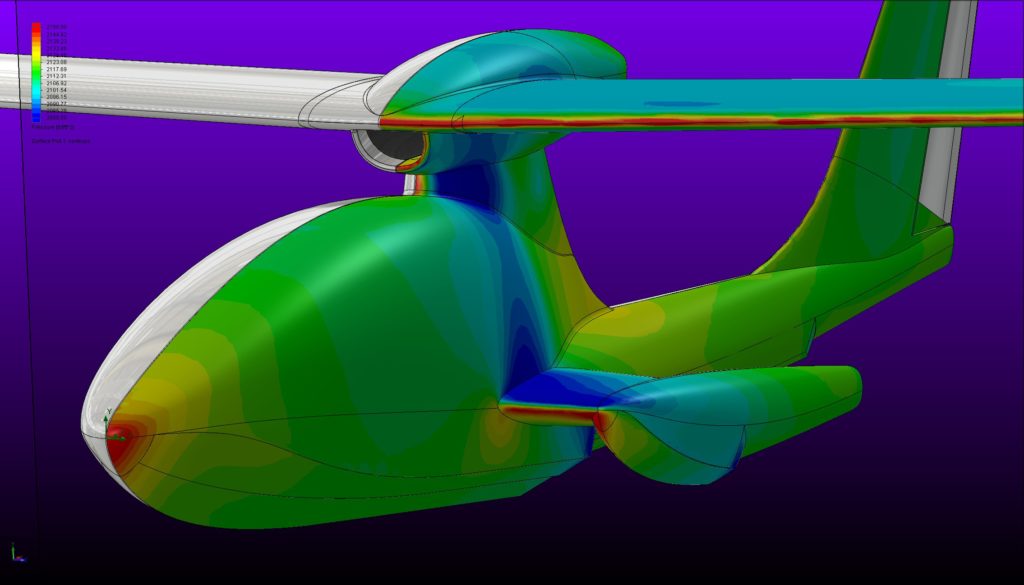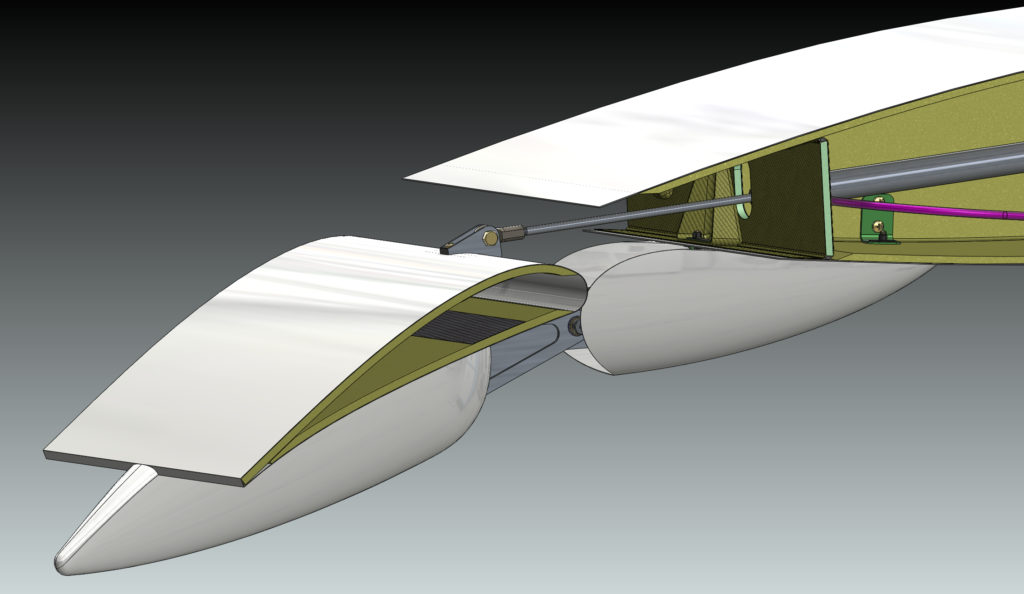The M7 design is a meticulously engineered combination of many components. It is particularly difficult to achieve low total drag with a seaplane. The necessity of locating the propeller clear of water spray creates the greatest challenge.


The canopy and cockpit is large, the width is determined by the required hull beam. The planform of the cockpit is a thick laminar flow shape. The parasol wing crates a pressure gradient that allows this shape to close rapidly making a space for the propeller. The canopy blends into a relatively thin wing pylon. The overall shape has good pressure recovery and will produce low drag and a smooth airflow into the propeller.
The wing utilizes a high lift laminar flow airfoil. The wing is sized to provide a water takoff and landing speed of 45 knots.

A fowler type single slotted flap is used to improve takeoff and landing performance.

The vertical fin and horizontal tail use low drag laminar airfoil shapes.